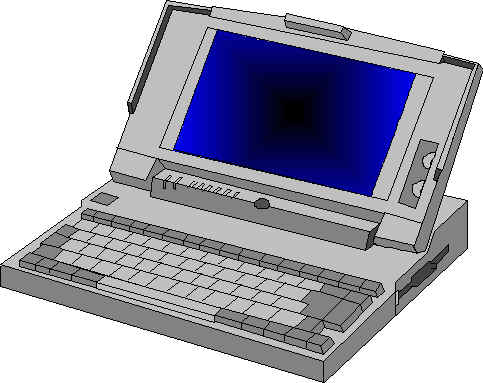204-1985
by Fred Gottheil
Southwestern Publishing
 Listserv mailbox
Listserv mailbox· Principles of Economics
· An online course: Principles of Microeconomics
· College Mathematics Review
· TU's Calculus on the Web Project
TEMPLE UNIVERSITY
Department of Economics
Economics 92
Principles of Microeconomic Theory (Honors)
Spring 1999
Tuesday and Thursday, 10:10 AM - 11:30 AM
Speakman Hall 210
(this is a change from the class listing catalog!)
Final Exam, May 11, 8:30 AM - 10:30 AM
| Instructor: | Andrew J. Buck
|
815 Ritter Annex 204-1985 |
| Office Hours: | Tues and Thurs after class or by arrangement | |
| Textbook: | Microeconomics, 2nd edition by Fred Gottheil Southwestern Publishing |
|
| Recommended Supplements: | · None this semester | |
| Information for an electronic age: | · email: buck@astro.ocis.temple.edu | |
 Listserv mailbox Listserv mailbox |
||
| Electronic textbooks: | · Essential Principles of Economics:
or go to the Mirror
Site · Principles of Economics · An online course: Principles of Microeconomics · College Mathematics Review · TU's Calculus on the Web Project |
|
The text and its supplements: The text by Gottheil is a new one for me. Fred is a popular teacher at University of Illinois. In fact he was one of the instructors for one of the classes I took there as part of my PhD program. The book is not difficult to read, but you will encounter a lot of new vocabulary. Create your own glossary by writing definitions in the margins. At the end of each chapter is a review. It is good practice to read the review before and after you read the chapter. There are also review questions at the end of each chapter; read them even if you don't write out answers. At the very bottom of the page is a link to the publisher's online tutorial materials. If you are a careful reader with good comprehension and retention skills then you may not find the supplements important. If you are just an average Joe, like me, then you will probably find the supplements helpful in clarifying and reinforcing what you have read.
Course Requirements: There will be one mid term exam and a final exam. You must write both exams. The dates are shown below. Make-up exams will be given only under extraordinary circumstances and by prior arrangement. There will be homework assigned periodically, check the timetable below. Your course grade will be computed as follows:
Exam 1 |
25% |
Final |
30% |
Hwk and projects |
30% |
Class Participation |
15% |
Goals of the Course: Microeconomic Principles will acquaint you with some of the basic models used by economists to explain the everyday behavior of individuals and firms. The science of economics is built on a specialized vocabulary. If you don't learn the vocabulary, then you won't learn the science. Mastery of the science of economics will involve learning to manipulate the vocabulary in order to systematically describe behavioral outcomes. We then try to generalize these outcomes as 'laws' or models. The 'laws' of economics are the basis of all of the other business disciplines. Most of the founding and noteworthy scholars in the other disciplines received their initial training in economics.
The fundamental result that you MUST keep with you throughout the rest of your academic and working careers is that firms and individuals make decisions at the margin. That notion was formalized more than 200 years ago by Adam Smith2. Adam Smith proposed that we choose that course of action which resulted in the greatest net incremental benefit. The principle was understood by one of our founding fathers and local luminary, Ben Franklin. Franklin recommended that one divide a page in half, listing the costs on one side and the benefits on the other. The correct course of action would then be dictated by weighing the costs and benefits and looking for the greatest net gain.
What makes this class different from Econ 52? This is an honors class. It is my presumption that you are prepared to go beyond what is expected of the students in the regular classes. The syllabus below reflects what is normally expected of my principles of microeconomics students in terms of materials and exercises.
At this time I have some strongly held beliefs. First, the best way to learn a subject is to be prepared to teach it. Second, you are poised at the early stages of a revolution in the way we deliver courses. Third, you have a comparative advantage in computer technology and communicating with your peers. With these beliefs in mind, your challenge will be to create computer based course materials for future principles of microeconomics students. We will try our hands at discussion questions and problems sets; the standard fare. From there the sky is the limit. You can see below that I have created some interactive graphs. We can create animated gif's (see the index for principles of microeconomics materials), or audio, music and video clips (MTV?) for use by students trying to learn microeconomics. If you are artisitic we can do storyboards or electronic comic books. You just need to dream it.
Words to the Wise: Attendance is not required, but I strongly recommend it. Indeed, how can you garner the 15% of your grade allocated to participation if you are not in class? Also remember that learning is hard work. It can be fun, but it is still hard work. Class time, reading assignments, and homework exercises are all part of the learning process. To paraphrase the wisdom of Confucious:
What I hear, I forget.
What I hear and see, I remember a little.
What I hear, see and ask questions about or discuss, I begin to understand.
When I hear, see, discuss and do, I acquire as knowledge and skill.
What I teach to another, I master.
| Timetable for assignments, readings, and exams | ||||||
| Date |  Text and SW web site |
 References to an electronic text |
Discussion Questions |
 Mathview Tutorials |
 Newspaper Articles and Other Reading |
 Problem Sets |
| Jan 19 | Introduction Chapter 1 | Introduction |
|
Graphs: Slopes and
Intercepts Graphs: Down and to the Right? |
||
| Jan 21 | Production Possibilities Chapter 2 | Neoclassical Perspective | Scarcity | Production Possibility Frontiers: Movements and Shifts | Opportunity Cost | |
| 26 | Demand and Supply Chapter 3 | Supply and Demand |
|
1. A
change in the quantity demanded, 2. A change in demand 3. The effect of a change in demand, on equilibrium 4. A change in the quantity supplied, 5. A change in supply
6. The effect of a change in supply on equilibrium |
1. Equilibrium 2. 3. |
Production Possibilities, and Answer |
| 28 | Further Topics in Supply and Demand Chapter 6 | Measuring Consumer
Surplus Measuring Producer Surplus |
Health Care for the Poor | Supply and Demand Shifts and Answer Key | ||
| Feb 2 | Elasticity Chapter 4 | Elasticity | Elasticity: Part 1 and Part 2 and Part 3 | Demand for hotel rooms in Philly | Equilibrium, due 9/16, answer key | |
| 4 | Consumer Surplus: Tarif Vert and Answer Key | |||||
| 9 | Consumer Choice Chapter 5 | Demand Theory: Part I and Part II | Marginal Analysis | How Many Should You
Buy Getting the Most for Your Money |
Elasticity, due 9/18, answer key | |
| 11 | Utility Maximization and key | |||||
| 16 | Business Ownership Chapter 7 |
|
Indifference Curves | |||
| 18 | Production Chapter 8 | Production | The PPF, Production and Resource Constraints | Production from one variable input | ||
| 23 | Production from one input and answer key | |||||
| 25 | Profit Maximization Chapter 9 | Cost and Supply | Inputs and Profit
Maximization
|
Fixed, Variable and Total Costs
Production, and Average and Marginal Costs |
||
| March 2 | ||||||
| 5 | Midterm Exam: An example with answers This semester's exam key |
|||||
| 9 | Spring break | |||||
| 11 | Spring break | |||||
| 16 | Markets and Market Structures Chapter 10 | |||||
| 18 | Price and Output: Competition | Competition The Notion of Efficiency: Tying some ideas together |
Competition | Quantity Choice by the Competitive Firm | Grain: A Homogeneous Good | |
| 23 | P&O: Monopoly | Monopoly | Monopoly
|
The Monopolist's Profit Maximization | Microsoft and Monopoly | The Competitive Paradigm |
| 25 | P&O: Other Paradigms | Imperfect Competition and Game Theory | * Imperfect Competition | Oligopoly Monopolistic Competition |
Price and Output under Monopoly | |
| 30 | Antitrust and Regulation Chapter 13 | * Antitrust
The Mock Trial |
Microsoft's Antitrust Woes | A middle ground: Monopolistic Competition | ||
| April 1 |
|
Deregulating Electricity | Antitrust or Regulation
|
|||
| 6 | Monopoly, Competition and Regulation | |||||
| 8 | Competitive Labor Markets Chapter 15 | Factor Markets | Factor Markets | Employment in a competitive labor market | Labor Markets | |
| 13 |
Labor Demand in competitive markets |
|||||
| 15 | Monopsony and labor Unions Chapter 17 | Wages and employment in monopsony | Discrimination in Baseball | |||
| 20 | Income and Poverty Chapter 18 | The Living Wage and Philadelphia | The Demand for Labor in imperfectly competitive markets | |||
| 22 | Foreign Trade Chapter 19 | Trade and Foreign Exchange | A Foreign Trade Primer from the NY Fed NAFTA after 5 Years |
Wage Determination Review | ||
| 27 | Survey: |
|||||
| 29 | Exchange Rates Chapter 20 | 1. Foreign Exchange 2. 3. The World Financial Crisis of 1998 |
Two Country Trade: Part 1 Two Country Trade: Part 2 |
|||
| May 4 | ||||||
| Final Exam, 5/11, 8:30 - 10:30 : An example with answers | ||||||
Assorted Links for your use: |
||
|
|
|
| The three icons above will take you to online textbook stores. I have haven't done careful comparison shopping and don't know about shipping, but they may be cheaper than where you customarily buy your textbooks. | ||
Prototype for PPF interactive video: An event in the HTML page spawns a video. Incidentally, it is possible to launch a web page (not done yet) from a video clip, not just the other way around as in the prototype.
Try these applets:
Price Ceiling
Price Floor
Taxes and Elasticities
Taxes: Who Pays?
-->